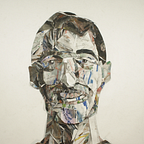Audio storyboarding
What is an audio storyboard and how is it useful?
What is a storyboard?
Humans process visual information 60,000 times faster than text (Sapega, 2021), which is why it is very common for visual storyboards to be used when there is a need to convey a story or a series of complex ideas. A visual storyboard graphically maps out the information clearly, often without any words. The image below is an example of a visual storyboard presenting a portion of the 1967 boxing fight between Muhammad Ali vs. Ernie Terrell. It was used to recreate the scene in the 2001 film Ali. On the storyboard, punches are shown by directional arrows which provide greater detail to the image. Scope is created in the first frame with a large wide establishing shot of the arena.
Audio storyboards
An audio storyboard maps out the sound that should accompany the action. It is a blank aural canvas for sound designers to explore how to introduce emotion, tension and so on into the sonic space of a new project. Jedd Remoroza, an aspiring sound designer at LMN Technologies, explained in his article Audio Storyboarding (shared on Barnicle Boy’s blog, 2019) that audio storyboarding facilitates three very useful processes:
- An ‘exploration of the fantasy you want to achieve’.
- A definition of ‘the emotional response you want from your audience’.
- And lastly, ‘designated time to fail and succeed at what resonates’.
Aural Cinema
A related topic is aural cinema, which is when a narrative is conveyed purely through sound, without any visuals, for instance radio storytelling. When there is a lot of input from a narrator who is telling the story, it is very easy for the audience to follow along, but when there is no narration and little dialogue the story must be delivered entirely through sounds. This was the first assignment I had to complete for my university’s sound design module. I was tasked with exploring the symbolic use of sound, an entirely sonic experience that would tell a simple forty-second story. The story I chose was: ‘You arrive home and scare your cat or dog, who knocks over your favourite vase’. We were told to consider ‘loudness to create a sense of depth… whereby the most important sounds are the loudest in the mix, regardless of distance, leading the listener up to a crisis point’. (Stonehouse, 2021).
Below is my attempt. It was challenging in a variety of ways and a completely new experience for me, but it has opened up a new realm of sonic art that I am excited to explore further.
Where I will go from here
Often when music is paired with visuals, the music is added after the visuals have progressed into something close to their final state. The storyline is set and the music and sound design needs to fit with it. However, the opposite process is also possible. I was contacted recently by an animator and hired for a project in 2022, as a sound designer and one of two session musicians, both drummers. The project will entail myself and the other drummer both expressing specific words, phrases and ideas, as instructed by the director, through our instruments. For example, a heavy character walking down the street, a light character, the word ‘hello’, the phrase ‘piss off’! Effectively, we will be using our drum kits as audio actors, where the sounds we make can later be used in a kind of dialogue. In my second role as sound designer I will be creating an audio storyboard that will fix the narrative, to which an improvised animation will be created and added on top. I am looking forward to working on this unconventional project, to discovering what will happen when audio storyboarding is done in reverse — sound first, story second.
REFERENCES:
BOY, B. (2019). Audio Storyboarding. [Online] Available at: https://programmersblog.home.blog/2019/05/30/welcome-to-my-blog/. [Accessed: 15.11.2021].
FARLEY, S. (2014). How About a Sound Ideaboard/Storyboard? [Online] Available at: https://designingsound.org/2014/03/07/how-about-a-sound-ideaboardstoryboard/. [Accessed: 23.11.2021].
LANNOM, S, C. (2020). 46 Storyboard Examples from Movies, Animation, and Games (with FREE Storyboard Templates). [Online] Available at: https://www.studiobinder.com/blog/storyboard-examples-film/. [Accessed: 06.11.2021].
SAPEGA, M. (2021). What Is a Storyboard and When Should You Use One? Your Ultimate Storyboarding Guide. [Online] Available at: https://careerfoundry.com/en/blog/ui-design/what-is-a-storyboard/. [Accessed: 10.11.2021].
SPOONER, B. (2021). Sonic Story. [Online video] December 13th. Available at: https://www.youtube.com/watch?v=G34xvvlGBSo. [Accessed: 12.11.2021].
STONEHOUSE, J. (2021). SOUND DESIGN IN VISUAL MEDIA, 7CTA1104–0909–2021, [Lecture notes] Sound Design 1. University of Hertfordshire, MSc in Music and Sound for Film and Games, Remote, October 2021.
